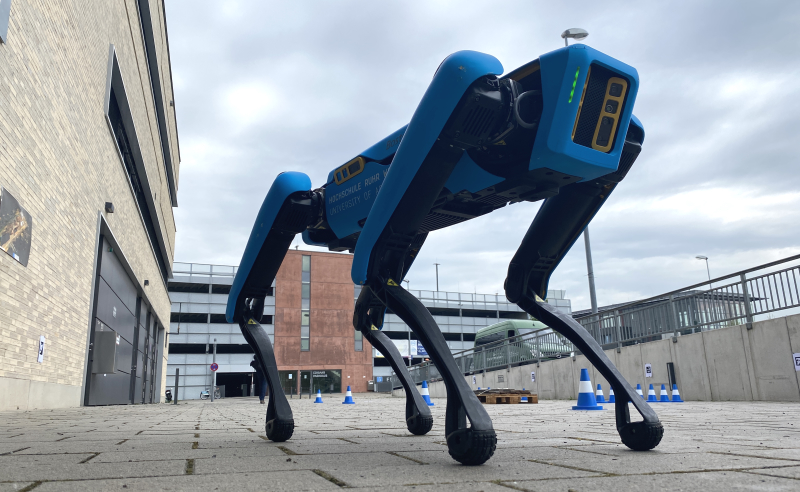
Mulheim an der Ruhr. Independent assistant on four feet
We hope to offer this heroic. It belongs to the Spot robotic dog breed. Developed by Boston Dynamics, HaRWi found a new home a few weeks ago at the HRW Institute of Mechanical Engineering. His new family includes the director of the institute, Dr. Joachim Friedhof, Institute staff and Human Rights Watch students.
The robot dog Spot is an open system i.e. HRW students can access information from the robot dog via a programming interface and also control it automatically. This allows you to develop your own mechanical engineering applications.
Spot is currently used in mechanical engineering and civil engineering courses. The mobile robot can monitor structures such as bridges or skyscrapers. In the event of a defect, such as wet or cracked concrete walls, the alarm sounds. It can also be used in chemical plants or large mechanical engineering plants – especially in places that are difficult for people to reach, and it can carry out inspections. The data you collect is then compared to the original data.
Spot or HaRWi is available to all university members for research, teaching or theses. The bot can also be used on projects with collaboration partners. The robot dog owes the name HaRWi to an award draw by the HRW Institute of Mechanical Engineering: This proposal was submitted several times and the lottery determined the winner.
Anyone wishing to experience HaRWi live should attend the University Open Day on Saturday, May 21, 2022.
Features
The robot dog is the size of a Swiss mountain dog. He has two front and two back legs. In places where the eyes normally sit, sensors are installed. They capture the environment around the laser scanners.
- Dimensions: 1000 x 500 x 190 mm
- Weight: 35 kg
- Speed: 1.6m/s
- Climbing ability: 30 degrees
- Payload: 14 kg
- Visualization: 360° stereo cameras, laser scanner (optional)
- Programming: Teach-in, Python API
- Running time: about 90 minutes
- Protection degree: IP54
- Temperature range: -20-45°C

“Problem solver. Proud twitter specialist. Travel aficionado. Introvert. Coffee trailblazer. Professional zombie ninja. Extreme gamer.”






More Stories
Below is the schedule of pension payments as of July 2022. Find out what benefits you will get after the changes [17.07.2022]
Overview of the new electric sports cars for the Hyundai Ioniq 5 N and Ioniq 6 N
Portugal has launched a floating solar power plant. It is the largest structure of this type in Europe – Economy